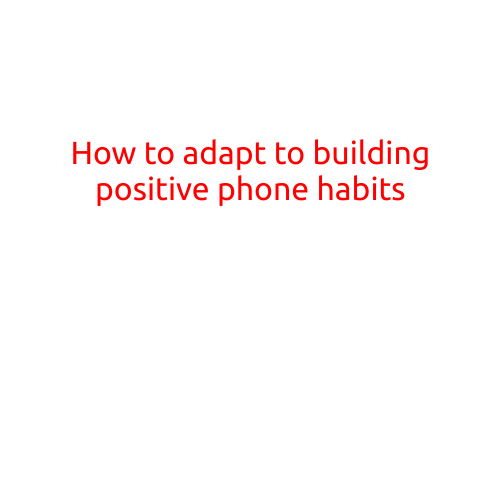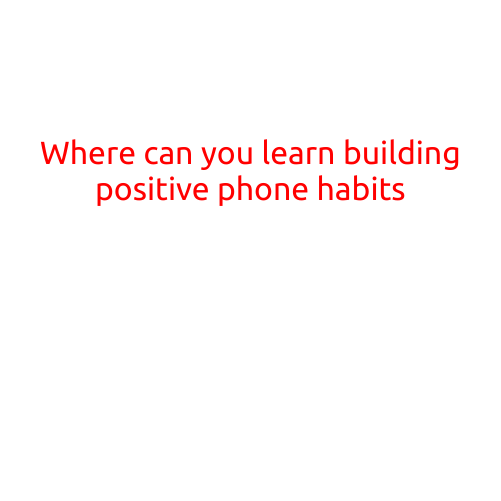
How to Adapt to Building Positive Phone Habits
In today’s digital age, our phones have become an integral part of our daily lives. With constant notifications, emails, and social media updates, it’s easy to get sucked into a cycle of constant screen time. However, excessive phone use can lead to mental and physical health issues, decreased productivity, and strained relationships. Building positive phone habits is crucial to maintaining a healthy balance between technology use and real-life interactions.
Step 1: Set a Goal and Track Your Screen Time
The first step in adapting to positive phone habits is to set a goal for yourself. Decide how much screen time you want to allocate each day and track your usage. You can use built-in apps like Screen Time (for iOS) or Digital Wellbeing (for Android) to monitor your screen time and set daily limits.
Step 2: Establish a Morning Routine
Start your day with a positive habit by setting a morning routine. Instead of reaching for your phone as soon as you wake up, try starting with a 10-15 minute exercise routine, meditation, or reading a book. This will help you wake up feeling energized and focused.
Step 3: Use Do-Not-Disturb Mode Strategically
Do-Not-Disturb (DND) mode can be a lifesaver when you need to focus on an important task or want some quiet time. Enable DND mode during specific periods of the day or night to avoid distractions and minimize notifications.
Step 4: Replace Screen Time with Other Activities
Find alternative activities to replace screen time, such as:
- Outdoor activities like walking, jogging, or hiking
- Creative pursuits like painting, drawing, or writing
- Cooking or meal prep
- Spending quality time with family and friends
Step 5: Practice Phone-Free Zones
Designate specific areas or times as phone-free zones. For example:
- Phone-free dinner table to encourage conversation and connection with family members
- Phone-free bedroom to improve sleep quality and reduce electromagnetic radiation exposure
- Phone-free public spaces like parks or museums to promote mindfulness and engagement
Step 6: Set Boundaries with Others
Communicate your phone habits to friends, family, and colleagues to set clear boundaries. Establish a “phones down” rule during social gatherings, meetings, or conversations to promote meaningful interactions and active listening.
Step 7: Find Healthy Phone Alternatives
Choose apps and features that promote positive phone habits, such as:
- Apps that track your screen time and provide rewards for staying within limits
- Tools that help you stay focused and avoid distractions
- Games or puzzles that challenge your mind without overwhelming your screen time
Step 8: Be Patient and Persistent
Adapting to positive phone habits takes time and effort. Don’t be too hard on yourself if you slip up – simply acknowledge the setback and refocus on your goals.
Conclusion
Building positive phone habits requires intentional effort, self-awareness, and a willingness to adapt. By setting goals, tracking screen time, and establishing routines, you can create a healthier relationship with your phone and enjoy the benefits of a balanced digital lifestyle. Remember, small changes can add up over time, and with persistence and patience, you can develop positive phone habits that improve your mental, physical, and emotional well-being.





